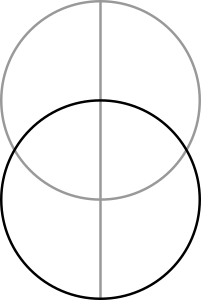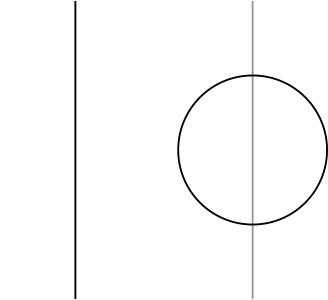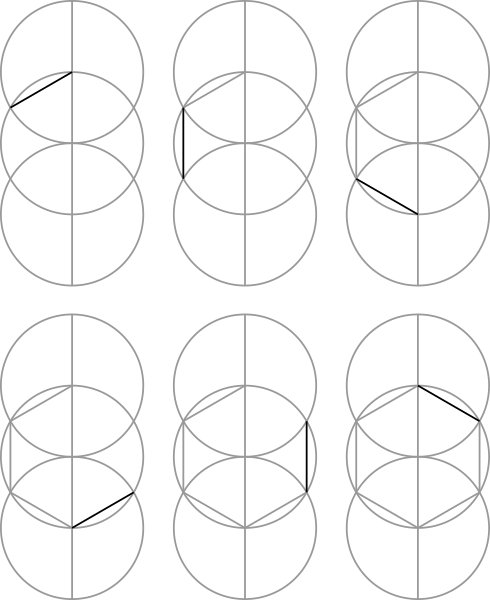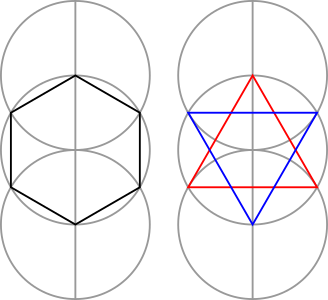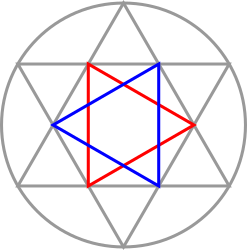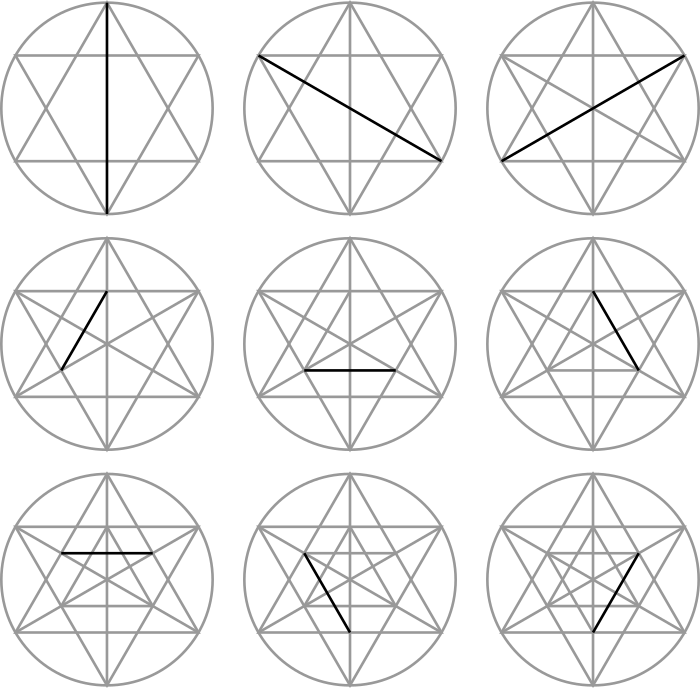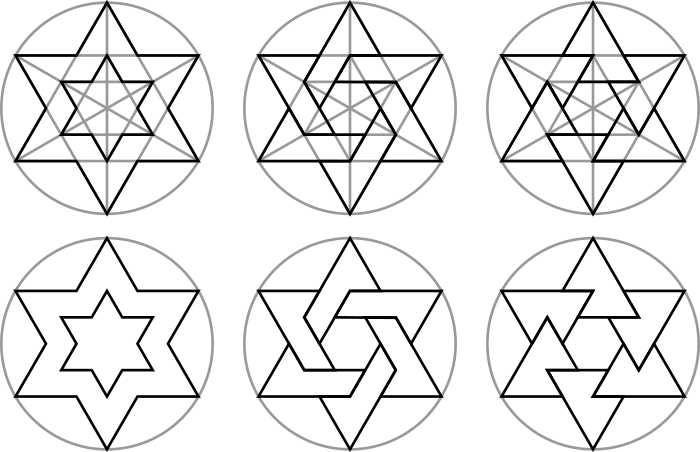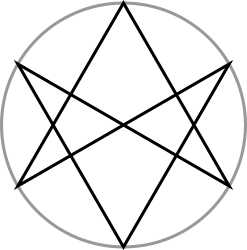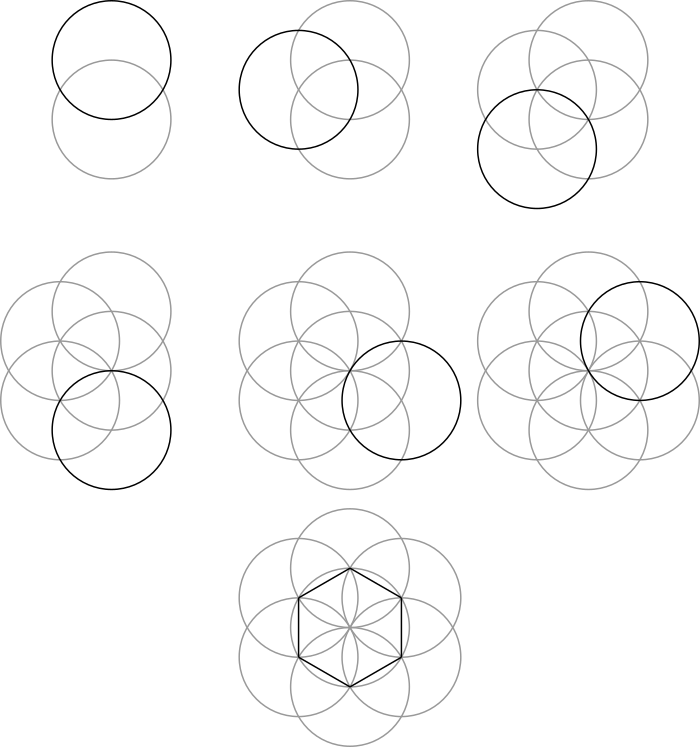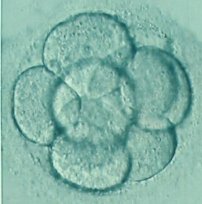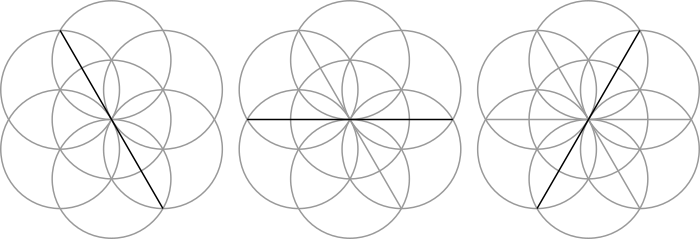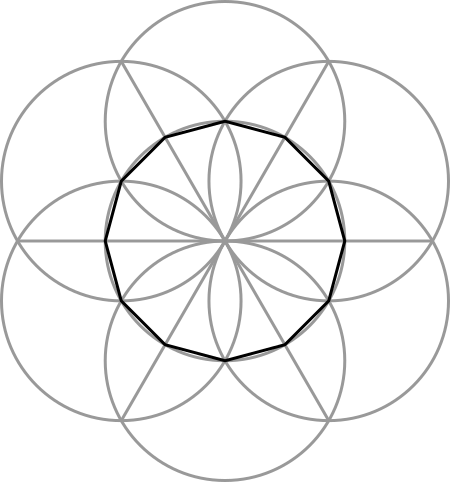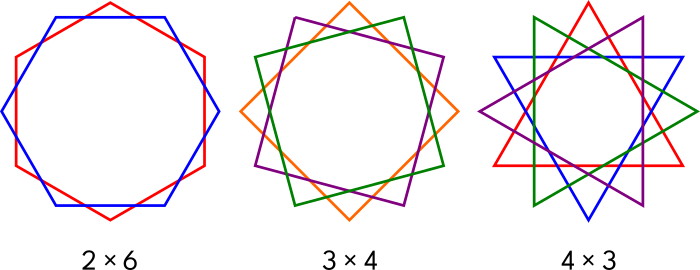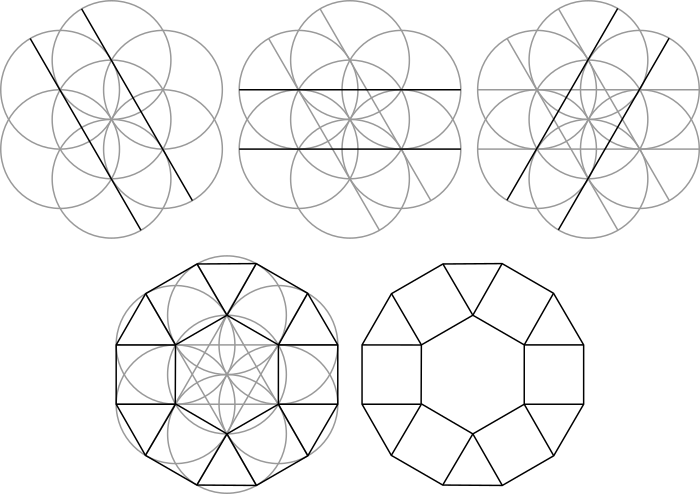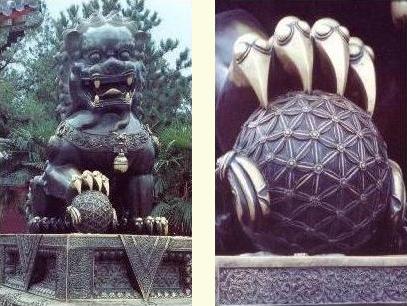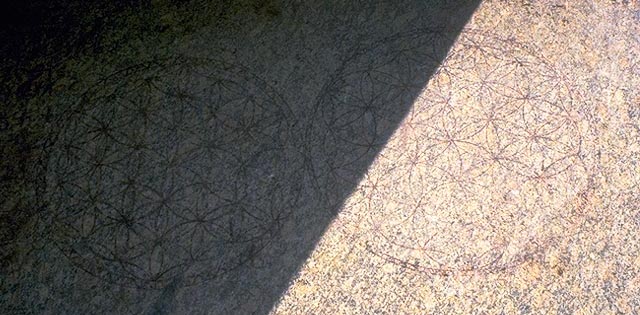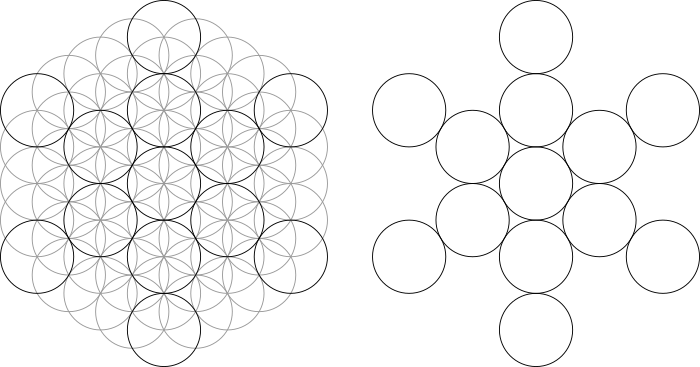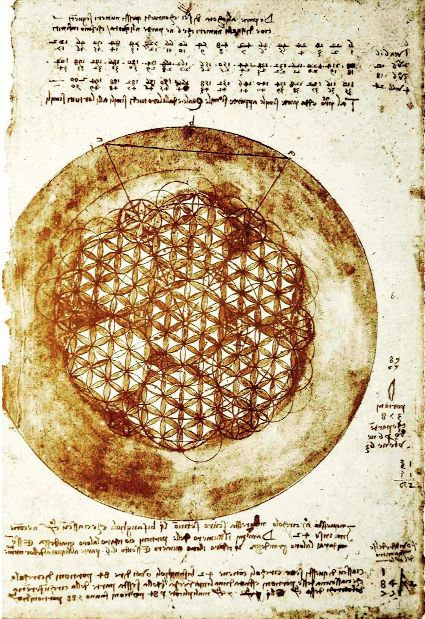Back • Return Home
Hexagonal Homilies On The Triune
• Basic Equilateral Triangle
• Basic Hexagon
• Hexagrams & Their Decorative Variations
• The Seed & Egg of Life
• Basic Dodecagon
• Dodecagrams
• The Flower of Life
• The Fruit of Life & Metatron's Cube
• The Tree of Life
Basic Equilateral Triangle (3-Sided Shape)
The prefix "tri-" means "three". By "equilateral" we mean that all of the sides of the triangle are the same length. This is probably one of the simplest constructions to do...
Step 1: Draw a vertical line and place a circle on it.
Step 2: Draw another circle of the same size centered on one of the points where the circle and the vertical line of the previous step cross.
Step 3: We now have the three corners of the triangle.
Basic Hexagon (6-Sided Shape)
The prefix "hex-" means "six". Like the triangle, this is also a very simple construction...
Step 1: Draw a vertical line and place a circle on it.
Step 2: Use the points where the circle crosses the line to make two more circles of the same size.
Step 3: This creates six points on the circumference of the central circle that we can use to make a hexagon.
Hexagrams & Their Decorative Variations
You might have already noticed how similar the previous two constructions are. A hexagram can be thought of as being made up of two triangles {6/2}:
The hexagon in the middle of the hexagram can be used to form a smaller hexagram:
However, if we connect the corners of the triangles that are opposite one another with lines, we can make a smaller hexagram that faces in the same direction.
The Math Cats website shows how to use this as a template for generating several nice decorative variations of the hexagram:
Alternating the number of points that we skip when drawing out the hexagram itself yields another interesting decorative variation, an "irregular unicursal hexagram":
The Seed & Egg of Life
We can create hexagons with another very simple and well-known construction, "The Seed of Life". This is made by placing six circles on the circumference of a seventh circle of the same size at every point where those circles overlap:
If we erase some of these arcs, we form another symbol, "The Egg of Life":
If you are curious, the reason why this figure is called "The Egg of Life" is because it represents what every multicellular organism looks like after three cell divisions. In other words, a huge number of living creatures start off looking exactly the same until they pass through this stage of life. These original eight cells are what connect all of us together!
A photomicrograph of an embryo
Basic Dodecagon (12-Sided Shape)
The prefix "do-" means "two" and "deca-" means "ten", so "dodeca-" means "twelve" (i.e.: 10 + 2). We can quickly form a dodecagon out of The Seed of Life.
Step 1: Connect together the large petal-like formations within The Seed of Life with lines.
Step 2: This produces six points on the circumference of the central circle. In combination with the smaller petal-like formations, we can use them to create a dodecagon.
Dodecagrams
There is one unicursal dodecagram {12/5}:
...and three different compound dodecagrams. They are made out of two hexagons {12/2}, three squares {12/3}, and four triangles {12/4}, respectively:
Hexagons, squares, and triangles are all united within the dodecagon.
The Flower of Life
In the same way that we created The Seed of Life, we can continue to overlap circles of the same size to form a large grid. For example:
If it is large enough (e.g.: 61 circles), we can derive a well-known symbol called "The Flower of Life" from it:
This symbol is ubiquitous. It shows up at sacred sites all over the world from different time periods. To give a few examples:
A Flower of Life sphere under the paw of a "Guardian Lion" at "The Forbidden City", an ancient imperial palace, in Beijing, China
Left: A Flower of Life at "The Golden Temple", one of the holiest shrines of the Sikh religion, in Amritsar, India
Right: A Flower of Life mosaic in Turkey
[The above images and text are adapated from those at Ancient Time News.]
Perhaps one of the most well-known appearances of The Flower of Life is at "The Temple of Osiris" in Abydos, Egypt. Several Flower of Life symbols are drawn on a few of its walls...However, exactly why they are there, when they were put there, and who put them there remains somewhat of a mystery. Like many artifacts and locations within Egypt, The Temple of Osiris as a whole seems to leave one with more questions than answers.
Photo Credit: Ray Flowers
The Fruit of Life & Metatron's Cube
We can extract a figure from the same grid called "The Fruit of Life". It is a snowflake-like shape made from twelve circles touching the central circle:
Connecting the centers of all of these circles with lines produces "Metatron's Cube":
Metatron's Cube is another mysterious symbol. The artist Charles Gilchrist has stated that it has its origins within the work of Luca Pacioli, a famous Catholic monk-mathematician who collaborated with Leonardo da Vinci.
Information on this symbol in relation to Luca is hard to come by. Although, even without a quotation that we can point to, it seems like a reasonable association as Leonardo analyzes the geometry behind The Flower of Life several times within his notebooks. Here is one of those pages:
Folio 307 of Leonardo da Vinci's "Codex Atlanticus"
...But who is Metatron? To quote the artist Paul Laffoley:
The Metatron is one of the most important angels in the Western Traditions of Angelology. He is the supreme Angel of Death to whom God gives orders as to which souls will be taken, and is the link between God and humanity. His name means "little yahweh" or "one who occupies the throne next to the divine throne". According to the Kabalah, The Metatron is the angel who led the children of Israel through the wilderness after the Exodus, as the "vox mystica". Although the name Metatron originated within the history of Judaism, the two parts of the name are from ancient Greek which may indicate a gnostic influence:
META: That which is beyond, more comprehensive of transcendent (a prefix)
TRON: That which is a complete instrument (a suffix).
Therefore, Metatron means a transcendent instrument, i.e. an angel.
There is much that one could read into this symbol, but we won't cover that here.
The Tree of Life
Another sacred symbol that has its roots in Judaism is "The Tree of Life". The template that underlies its construction is similar to the hexagon one given above.
This diagram is rich in beautiful symbolism. We will definitely explore it elsewhere. For now, we just want to point out its relationship to the other "Life" geometries (i.e.: The Seed, The Egg, The Flower, and The Fruit).


